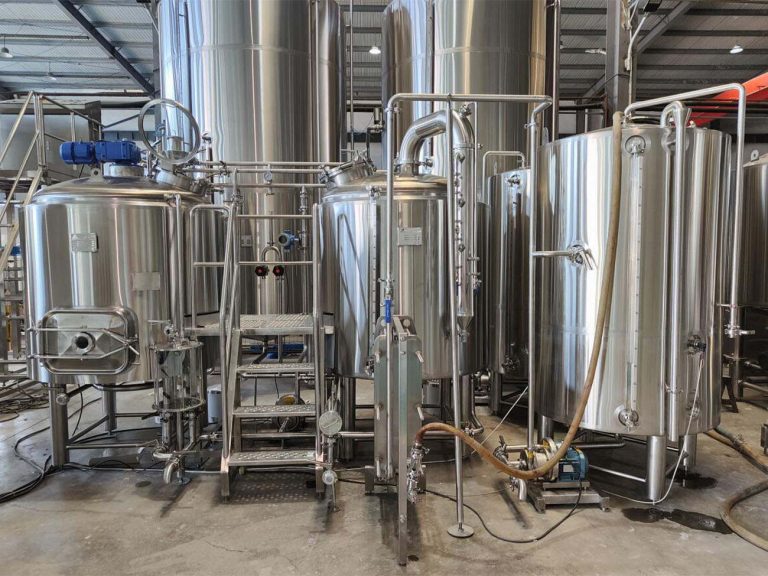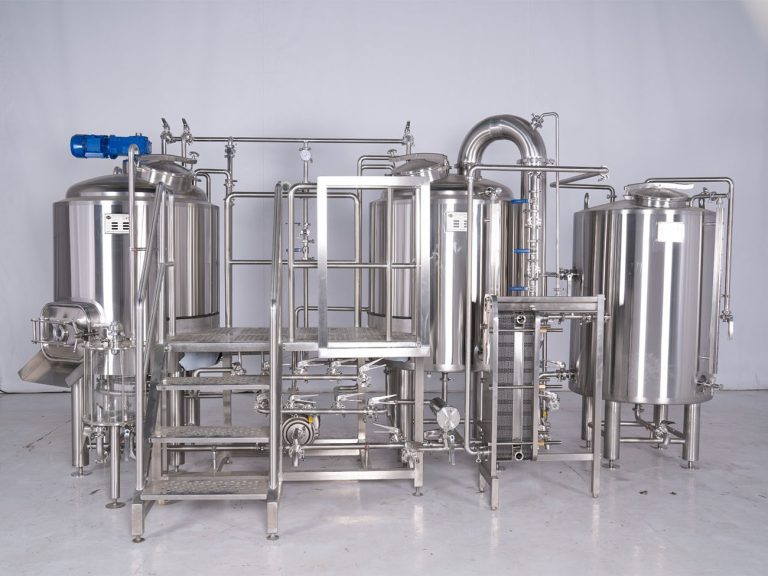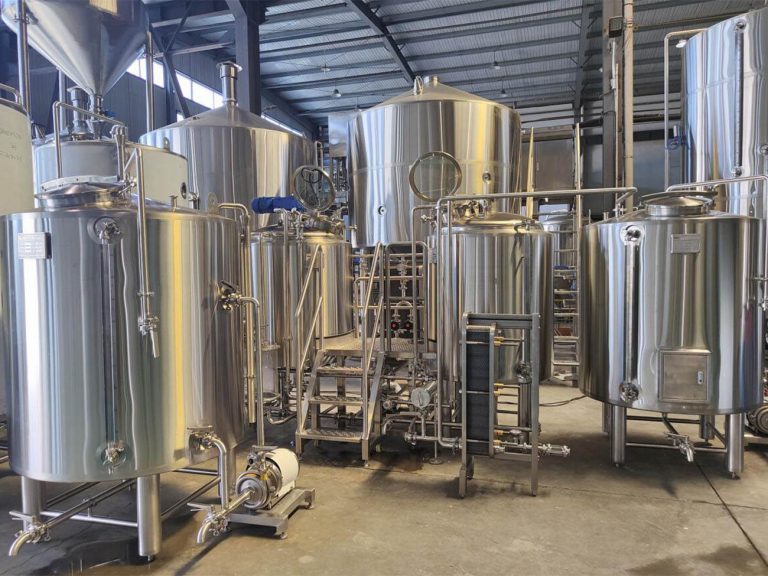


A 300L nano brewing system is a relatively small-scale setup, often chosen by homebrewers looking to expand into small commercial operations or by entrepreneurs aiming to start a microbrewery with limited production capacity.a 300L brewpub craft brewing equipment setup would enable the brewpub to produce a variety of fresh and unique beers onsite, enhancing the overall experience for customers and creating a distinctive identity for the establishment within the craft beer community.
A 300L nano brewing system is a relatively small-scale setup, often chosen by homebrewers looking to expand into small commercial operations or by entrepreneurs aiming to start a microbrewery with limited production capacity.
2.300L Nanobrewery System Specification:
| Output/Brew | 300L |
| Brew/Week | 2~6 |
| Output/Week | 600~1800L |
| Electric Supply | 3phase/380(208, 415,480…)v/50 (60)Hz |
| Heating Source | Electric/Steam |
| Area Request | 30m2-40m2 |
| Brewmaster | 1 |
3.300L Nano Brewery System Configuration:
| General specification for 300L brewery equipment | ||||
| No. | Name | Components | Capacity | Specification |
| 1 | Grain Milling Unit | Rolling Miller | 80~150kg/hr | Double roller |
| Power:1.1Kw | ||||
| Noise:45±3db | ||||
| 2 | Brewhouse Unit | Mash/Lauter tun | 300L | Side mounted grain outdoor with grain chute |
| Laser cutting V-wire False Bottom | ||||
| Kettle/Whirlpool Tun | 300L | Electric heating; Power: 18kw | ||
| Tangential whirlpool inlet | ||||
| Sanitary leveling sight glass | ||||
| Heat exchanger | 4M2(Effective area) | Completely 304 SS Corrugated plates | ||
| YUY pump | 3M3 | ABB, Sanitary SUS304, VFD control | ||
| Pipe and fittings | As design | completely SS304 | ||
| 3 | Fermentation unit | Fermenter | 300L or 600L | Dimple cooling jacket on cone and bottom |
| Top manway | ||||
| 60 degree cone bottom | ||||
| Perlick style full sanitary sampling valve | ||||
| Carbonation port and level tube for special request | ||||
| 4 | Bright beer tank | Bright beer tank | 300L or 600L | Dimple cooling jacket on cone and bottom |
| Level tube for checking | ||||
| Top manway | ||||
| Perlick style full sanitary sampling valve | ||||
| Carbonation port with tri clmap carbonation stone | ||||
| 6 | Glycol Chilling Unit | Glycol Water Tank | 5HL | Insulated conical top and sloped bottom |
| Chiller | 5HP | Cooling Capacity: 11000Kcal/5HP | ||
| Installed Power:5.5kw | ||||
| Noise:70-80db | ||||
| Refrigerant: Freon R404A ,R410A | ||||
| Coperland compressor | ||||
| PVC pipe | As designed | Solenoid valves for glycol inlet to tanks are included | ||
| Glycol water pump | 3M3 | Sanitary SUS304, VFD control | ||
| 7 | Control unit | Brewhouse and fermentation
process Controlling |
Floor type | Manual button control panel or PLC control with touch screen for special |
| 8 | CIP | CIP pump with VFD | 3M3 | YUY, VFD control |
| 9 | Keg cleaning | 2 head | 20-30kegs/hr | Heating: Electric, Power: 15kw |
| 10 | Keg filling | A coupler | Manual | Coupler for filling beer |
| 11 | Bottling line | 4 head | 160-180 bottles/hr | Manual |
| 12 | Others | Option | Can be Customized | Auger System |
| Grain Case | ||||
| Grist Hydrator | ||||
| Piping flow panel for Brewhouse | ||||
4.Advantages of a 300L nano brewing equipment:
Cost-Efficiency: Nano brewing equipment, like a 300L system, offers a more cost-effective entry point into the brewing industry compared to larger commercial setups. It requires less initial investment in equipment, space, and resources.
Space Optimization: It’s smaller and requires less space compared to larger brewery systems, making it suitable for smaller locations or areas with limited space availability. This allows for more flexible placement and operational adaptability.
Flexibility and Experimentation: The smaller batch sizes allow for more experimentation with recipes, ingredients, and brewing techniques. Brewers can test and refine their craft without committing to large volumes, fostering innovation and creativity.
Adaptability and Scalability: Nano breweries have the flexibility to adapt quickly to changing market trends and consumer preferences. If demand grows, they can often scale up gradually by adding more fermenters or expanding equipment.
5.What factors should be considerations about 300L nano brewing equipment:
Space Requirements: Assess the available space for brewing equipment, fermentation vessels, storage, and operational workflows. Ensure the space is sufficient and adaptable for the brewing setup.
Budget and Costs: Calculate the total investment required for equipment, installation, utilities, ingredients, permits, and ongoing operational expenses. Understand the financial implications before starting the brewery.
Regulatory Compliance: Comply with local regulations, health codes, and licensing requirements for operating a brewery. Obtain necessary permits and certifications before starting operations.
Workflow and Efficiency: Understand the brewing process and the workflow of the equipment. Optimize the layout and operations to ensure efficiency and consistent quality across batches.
Staffing and Expertise: Determine the skill level required to operate the equipment effectively. Consider the need for trained personnel or invest in training for you or your team.
Market Analysis: Conduct market research to understand the demand for craft beer in your area and the competition. Determine if a 300L setup aligns with market needs and your business goals.
Scaling Potential: Evaluate the potential for growth and scalability. Determine if the equipment allows for future expansion or if there’s room to increase production capacity.
Conclusion:
A 300L nano brewing system offers a platform for passionate brewers to experiment, create unique flavors, and potentially grow into a larger-scale operation. However, it requires careful planning, dedication, and a focus on quality to succeed in the competitive craft beer industry.